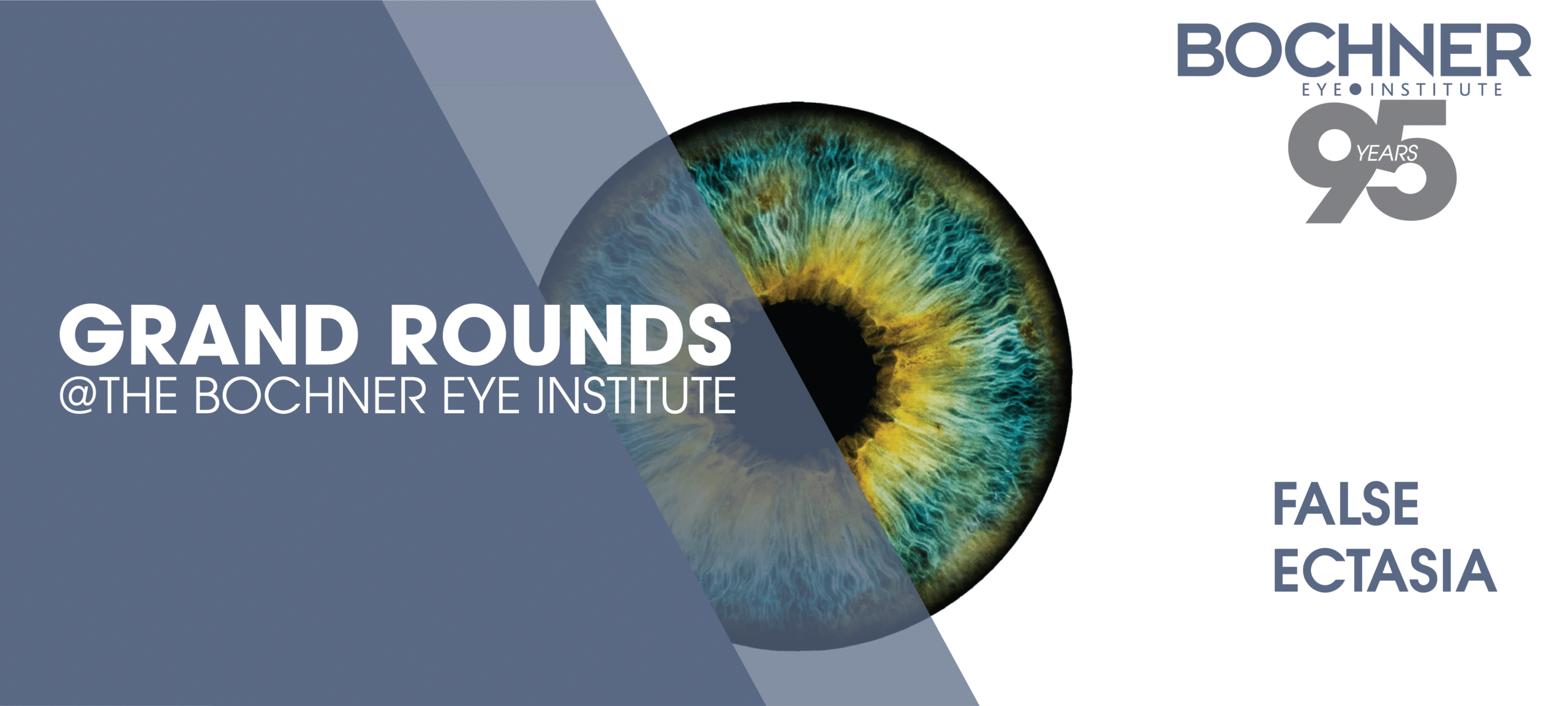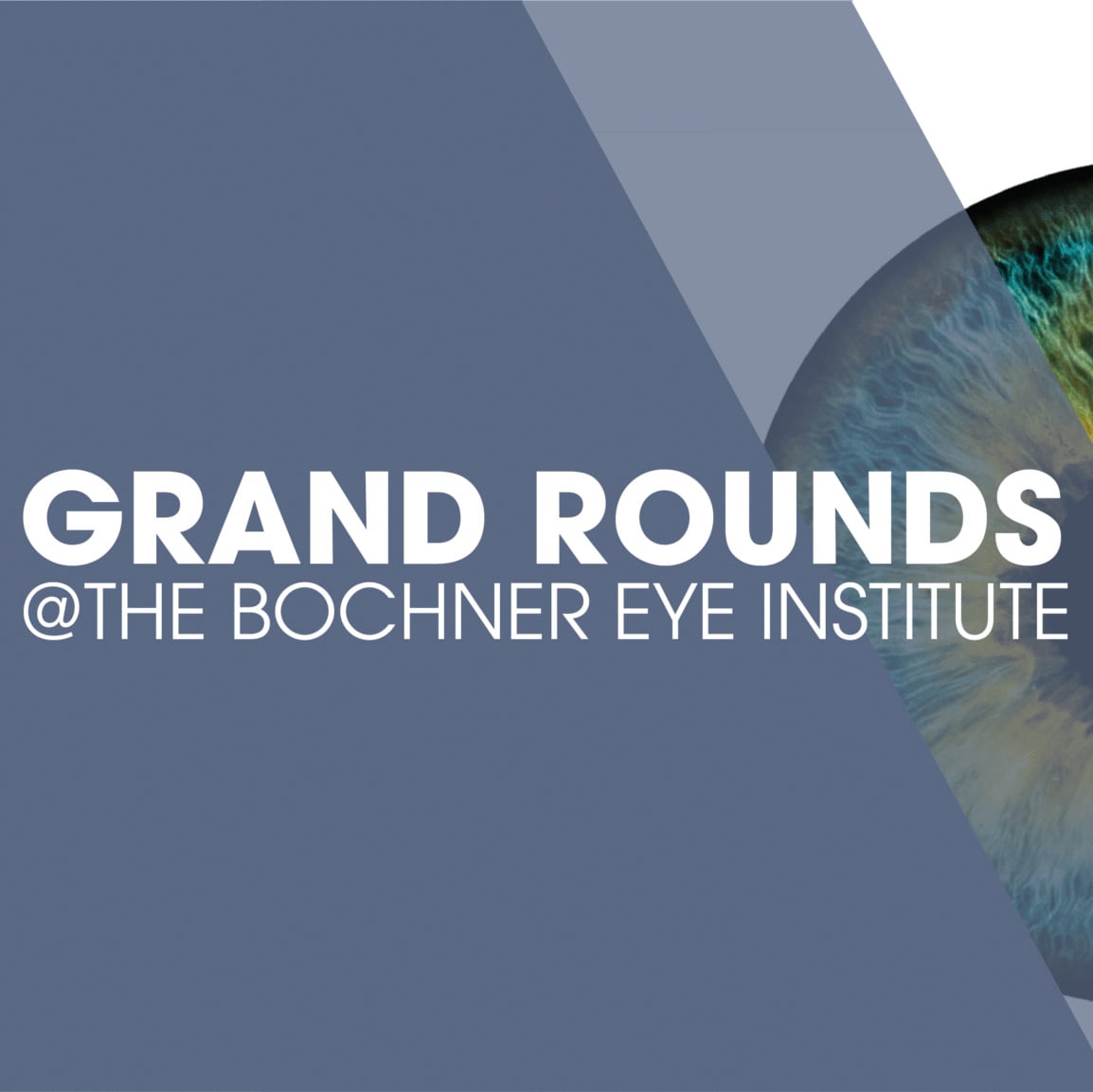
PSEUDOKERATOCONUS
This corneal topographic image shows significant corneal irregularity and is associated with reduced best-corrected visual acuity. Although keratoconus is a possible diagnosis, the nasal pattern of steepening is very uncommon. Slit-lamp examination using fluorescein and blue light showed a rapid tear breakup in the steep topographic area suggestive of epithelial basement membrane dystrophy (EBMD).

A superficial keratectomy was performed to remove the corneal epithelium. The epithelium grew back to create a smooth surface with a resultant improvement in best-corrected acuity.
TOP 3 LEARNING POINTS
- Any epithelial irregularity can create a pseudokeratoconus pattern on corneal topography. In order to make an accurate diagnosis, a slit-lamp examination and topography are required
- In addition to EBMD, other conditions can create a pattern on topography that resembles keratoconus. These conditions include Salzmann’s nodular degeneration, superficial punctate keratopathy, amiodarone keratopathy, corneal scars, and corneal warpage from contact lenses
- It is essential to make the correct diagnosis to avoid treating non-keratoconus patients with corneal cross linking.


